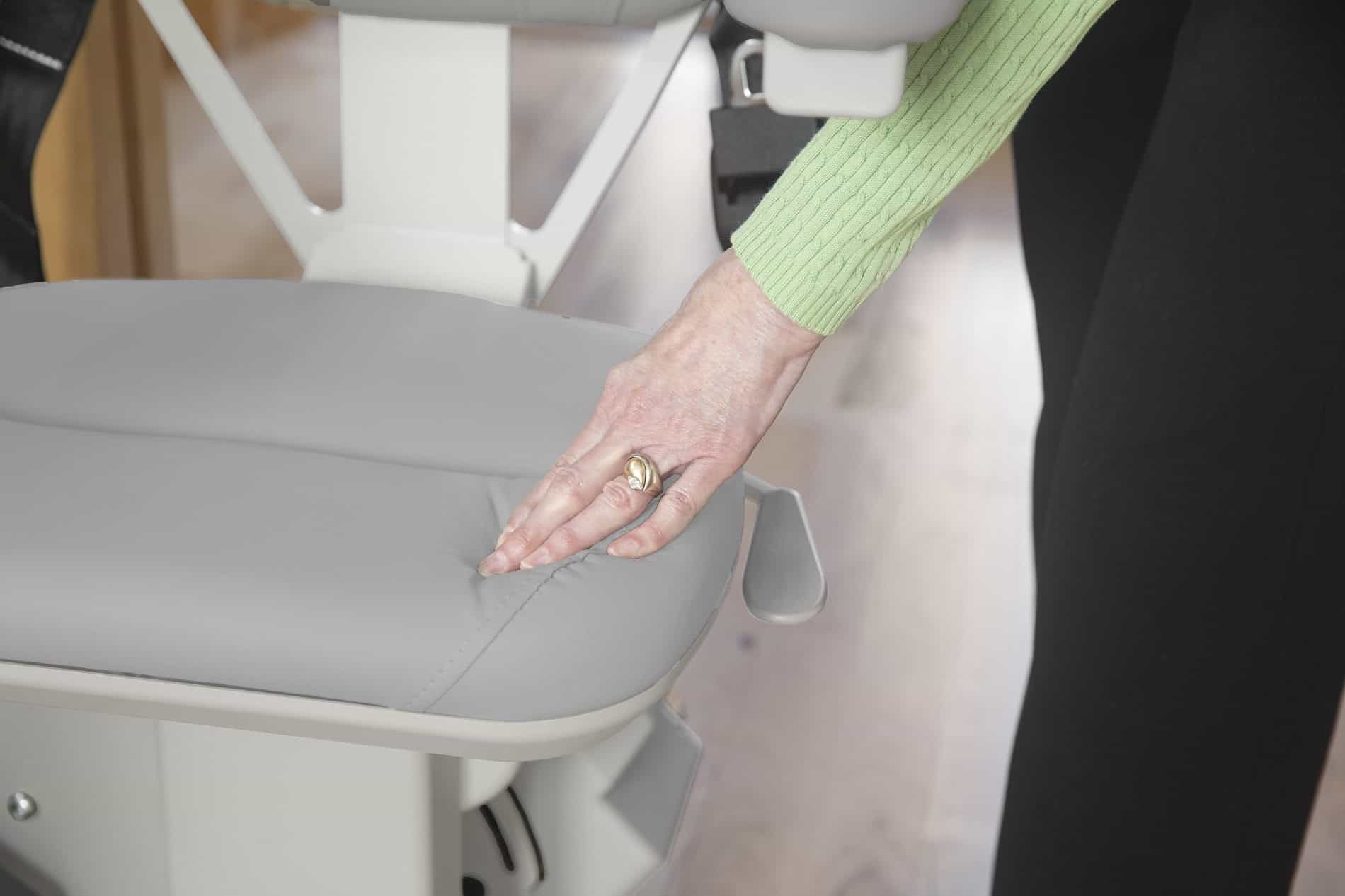Stairs can present a hazardous and frightening issue for individuals living with dementia. What may have once seemed instinctual, ascending and descending steps, can be worrisome and dangerous. What can you do? Try to understand stairs from the perspective of dementia first to make modifications that help.
June is the time to observe Alzheimer’s and Brain Awareness Month and spread information pertaining to living with dementia. Americans have been honoring and observing this national day since Ronald Reagan initiated it in 1983.
One area of difficulty in the home environment for anyone with dementia is stairs or steps. That is, there are times when the individual may not be able to ascend or descend as safely as they once did. In these living situations, it makes sense to explore the possibility of a stairlift, or other mobility aid to improve access and quality of life.
Some other things to understand about stairs from the dementia perspective include:
- Dementia can affect depth perception and color contrast. This can be a recipe for a nasty fall. It can be hard to determine where one step ends and the next begins when you have these issues.
- Are the steps in the home carpeted? This can also cause difficulty with color contrast, leading to a fall. The challenge for a dementia patient can be distinguishing the riser from the stair tread. Fortunately, this is easily solved. Try putting colored tape along the edge of each step, in a contrasting hue. Make sure the tape is secure and doesn’t present a fall risk.
- Use a thoughtful eye to remove anything from the home environment that could pose the risk of a trip, fall, or injury. Trouble-shoot the entire home, if feasible, and remove any hazards. This is also a good time to de-clutter and spring clean the dwelling to additionally remove potential obstacles.
- How is the lighting in the home? Did you know that poor lighting is to blame for senior falls? Make sure that there is ample lighting, especially around stairs and doors, with easy-to-access switches at both the top and bottom of any stairs. Make the switch stand out with a piece of bright tape or a sticker for easy identification.
- Make sure that the home’s stairs, steps, or inclines have handrails. These need to be sturdy and secure, too. Don’t rely on the wall when you have stairs with a banister on the other side. Install a handrail to prevent problems and make using them easier.
- Dementia can affect mobility in many cases. For instance, some forms of dementia manifest similarly to symptoms of Parkinson’s disease. This results in spasms or tremors that are difficult to control. Another dementia-related issue affecting mobility is stiffness. It may cause rigidity or limping when the individual walks or moves about. Every case, and type of dementia, is different. Discuss symptoms and concerns with your provider or practitioner.
- Another challenging symptom of dementia affects coordination and balance. This can make the individual feel dizzy or experience a type of vertigo where they have difficulty maintaining balance. It may also make the patient feel nauseous or queasy, though some may have difficulty articulating this. These symptoms can increase the risk of a fall and subsequent injury including fractures or broken bones which can be debilitating for anyone, but perhaps most especially for an older dementia patient.
- Many dementia patients struggle with Apraxia, which occurs when there is a malfunction or breakdown in the message that goes from the brain to the body. For instance, it may manifest in a person being unable to stand when sitting. It can seem like they don’t know how to rise from the position.
- Some experts report that you can trigger them to respond, in this case, stand, by gently touching or nudging them. This sensory stimulus can often help.
- When assessing mobility aid options, there is a chance that individuals with certain types of dementia will not adapt well to stairlifts. This could be the case with those that suffer from Dementia with Lewy Bodies Syndrome. This condition is marked by hallucinations, paranoia, and anxiety surrounding seemingly normal things, and using a stairlift could make them fearful.
- Sadly, as time goes on and these conditions progress, mobility will decrease. People with late-stage Alzheimer’s are not typically mobile, and brain function focuses on critical activities, like respiration. The prognoses will vary. Don’t wait to implement mobility aids that could be ease, reassurance, and autonomy to any individual with dementia.
Do you or someone you love live with dementia symptoms? Now is the time to explore how mobility aids and options can enhance safety in the home- as well as improve the overall quality of life. Talk to the mobility professionals at Pacific Mobility; call or visit today.
President, Husband, Father, Grandfather Graduate of UC Davis- Bio Sci Major- Go Aggies! Jeff has extensive experience in all of Pacific Mobility’s products and services, and specializes in accessibility products as well as stairlifts, ceiling lifts and custom wheel chairs. His hobbies include spending time with family, gardening, mountain biking, exercising and off road motorcycle riding.
24 years as Owner/President of Pacific Mobility Center – selling, installing, and servicing stairlifts, porch lifts, ceiling lifts, pool lifts, handicap ramping, specialty wheelchairs, scooters, power wheel chairs, and other power mobility devices
Certified Environmental Access Consultant since 2008
Licensed General Contractor since 1998
Certified Aging in Place Specialist since 2016
Board Member for Home Access Professionals
Member of Association of Members of the Accessibility Equipment Industry (AEMA)




